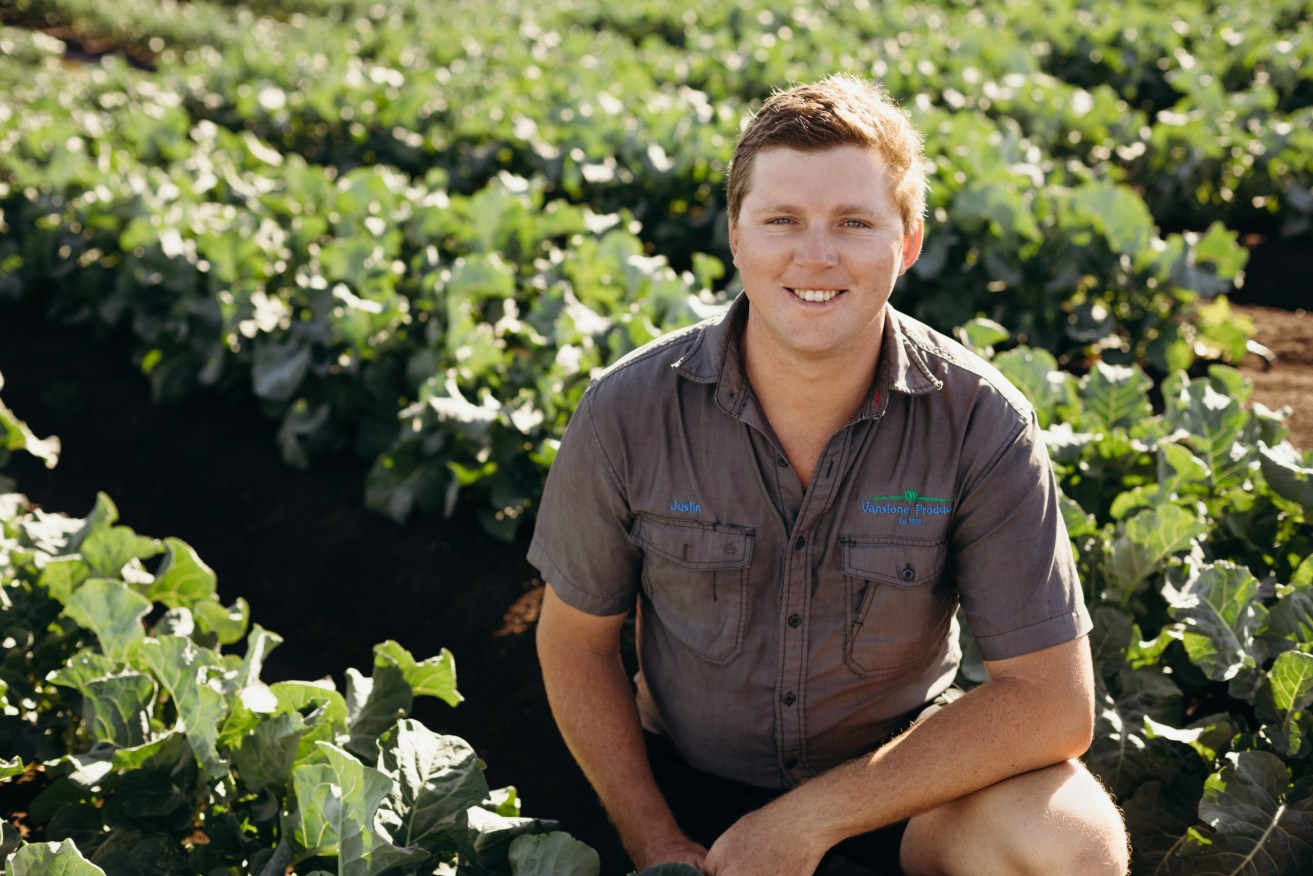Bumper crop: Farmers beat drought, virus to set production record
Australia’s farm production has been forecast to soar to a record high on the back of a remarkable turnaround from a crippling drought.

Vanstone Produce managing director Justin Vanstone on his family farm near Gatton. (Photo: Ausveg)
The federal government’s agriculture forecaster ABARES predicts production will reach almost $66 billion in 2020/21.
The latest figures, to be released at ABARES’ annual outlook conference on Tuesday, show the industry is defying the pandemic and seeing off the effects of consecutive poor seasons.
ABARES acting executive director Jared Greenville said it was forecast to be an excellent year for agriculture with an expected eight per cent lift in production value from last year.
“The rebound from drought has been exceptional – in terms of the three consecutive years of decline and the sheer scale of the turnaround,” he said.
Australia’s winter crop of 55.2 million tonnes – the second biggest on record – has underpinned the growth.
“Combined with favourable conditions and continued strong meat prices, the short-term outlook is very positive, with the average national farm income projected to increase by 18 per cent to $184,000 a farm,” Greenville said.
Lower livestock numbers as farmers rebuild herds and flocks will lead to less slaughter and meat production.
This is the main contributor to a four per cent fall in exports.
In 2021/22, overall production is forecast to fall slightly to $63.3 billion with cropping regions benefiting from residual soil moisture and replenished water storages.
In the medium term, the value is expected to remain above $60 billion.
While the industry has set a government-backed target of reaching $100 billion by 2030, Greenville said the longer term outlook was less clear.
“While the sector has demonstrated resilience and the ability to adapt to COVID-19, other challenges remain,” he said.
“Shifting trade, along with macroeconomic and production uncertainties, will provide the backdrop for what we expect to be a more difficult environment in which to grow production and trade value.”
He said population growth, urbanisation and middle-income growth would be positive forces for the sector.
“What will be important is creating the conditions to maximise the sector’s growth and contribution to the economy,” he said.
“Innovating and meeting consumer expectations around what we produce and how we do it, along with ensuring our export systems are efficient and reward producers for the quality of their product, will all be important in growing value in an uncertain future.”












